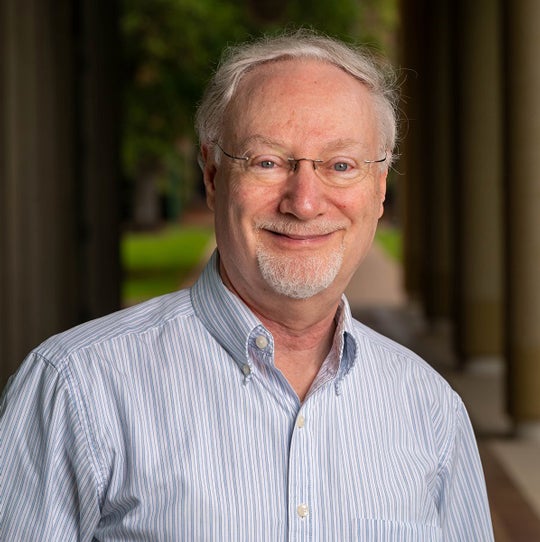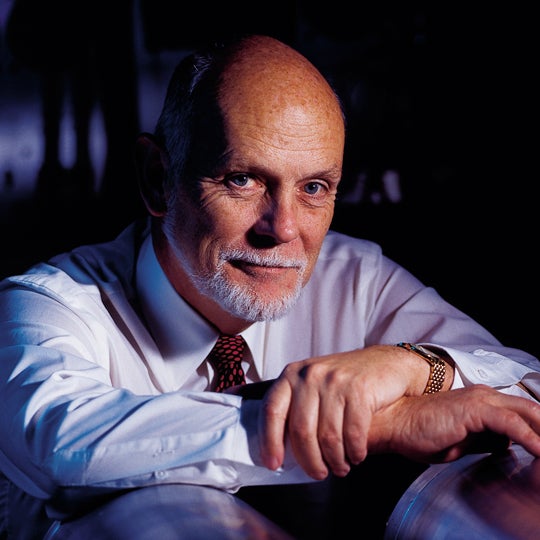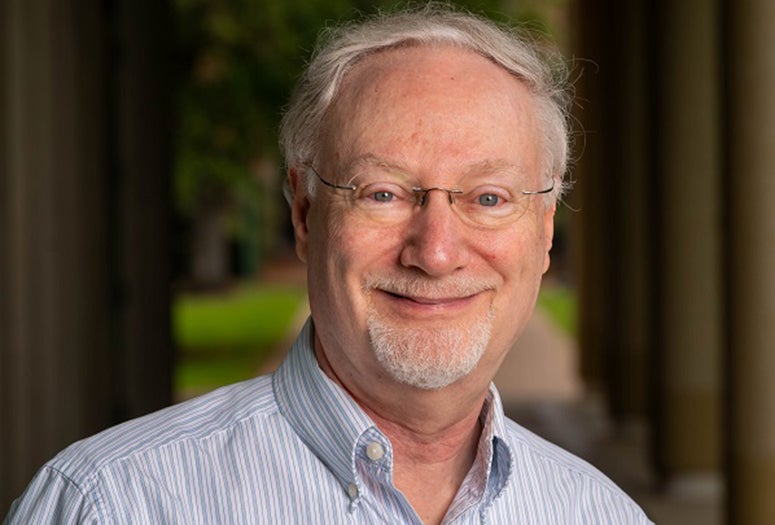by Jade Boyd
Special to Rice News
Rice University chemist Bruce Weisman’s three-decade career in nanocarbons research has been honored with the namesake award of the Rice colleague who founded the field and sparked Weisman’s interest in it.

Weisman is the winner of the Electrochemical Society’s (ECS) 2024 Richard E. Smalley Research Award. Smalley, also a Rice chemist, was a Nobel laureate, nanotechnology pioneer and a frequent research collaborator and friend of Weisman’s prior to his untimely death from cancer in 2005.
“I’m very honored,” Weisman said of the award, which is given every two years by the ECS Nanocarbons Division in recognition of “outstanding achievements in, or scientific contributions to, the science of fullerenes, nanotubes and carbon nanostructures.”
Weisman is a professor and associate chair for teaching in the Department of Chemistry and holds a joint appointment in the Department of Materials Science and Nanoengineering. He joined Rice’s Wiess School of Natural Sciences in 1979. Like Smalley, Weisman was a spectroscopist, but the two didn’t begin collaborating until a few years after the groundbreaking discovery of carbon 60, or buckyballs, in Smalley’s lab in 1985.
Writing in the ECS journal Interface in 2013, Weisman said, “It is estimated that more than 90% of all recognized chemical compounds include carbon. By contrast, for millennia only two known substances were composed exclusively of carbon atoms: … graphite and diamond.”
The buckyball discovery proved that carbon could take other forms, and it would earn Smalley, Rice chemist Robert Curl and British chemist Harold Kroto the 1996 Nobel Prize in Chemistry. The discovery also sparked a worldwide interest in exploring carbon nanostructures.
In 1991, Weisman first collaborated with Smalley, Curl and others on experiments to measure the electronic spectra of both buckyballs and their slightly elongated cousins, carbon 70. That year also saw the discovery in Japan of carbon nanotubes, hollow cylinders that have been the focus of Weisman’s research for more than 20 years.
“My activity in the carbon nanotubes field is a result of a collaboration with Rick that started in 2001,” Weisman said. “Rick was engaged in a wide variety of carbon nanotubes studies, and he asked whether I would collaborate on the spectroscopic aspects of nanotubes. It was a little bit ironic since Rick’s own background was very much like mine. But his interests were so widespread at that point that he didn’t want to refocus on spectroscopy. So he asked if I would take on that task.”

What followed were two seminal studies published in Science. The first marked the discovery of near-infrared fluorescence in single-walled carbon nanotubes, and the second identified the optical signatures of the 33 known types of light-emitting nanotubes.
“A key task was identifying which spectral features arose from which physical structure of nanotubes,” Weisman said. “In the spring of 2002, we were able to finally get an instrument together to measure the full excitation emission spectrum in the near infrared. That allowed us to really see that full set of emission features coming from a mixed sample of carbon nanotubes, and it gave us the data we needed to solve the spectroscopic assignment problem.”
The findings were a boon to chemists, physicists and materials scientists who studied nanotubes, because Weisman’s spectrometric method of assaying nanotubes was far simpler, faster and cheaper than nonoptical methods.
“It was a very powerful characterization tool, and I wanted to promote it in the community,” Weisman said. So he founded a company, Applied NanoFluorescence, in 2004 to offer commercial versions of the technology his lab had developed. The specialized hardware could deliver test results in less than a minute, and “the software had a lot of spectroscopic knowledge built in, which meant somebody could do the spectroscopic interpretation without being a specialized spectroscopist.”
The Houston-based company is still going strong, and Weisman’s research group has continued to conduct basic research on the optical properties of carbon nanotubes. For example, in 2010 his team discovered a way to chemically modify, or dope, the surface of nanotubes with oxygen in a way that could be useful for shifting the wavelength of their optical signatures. And more recently it has explored methods of modifying nanotubes’ optical signatures by covalently attaching DNA wrappers.
Weisman’s work has made him a leader in the nanocarbons field. He’s an elected fellow of the American Physical Society, the American Association for the Advancement of Science and the ECS as well as a former chair of the ECS Nanocarbons Division, which will formally present him the 2024 Smalley Research Award at the society’s annual meeting in May.
“It changed my career,” Weisman said of his work with Smalley. “Everything I’ve done in the last 20 years has been an outgrowth, a consequence of that.”

